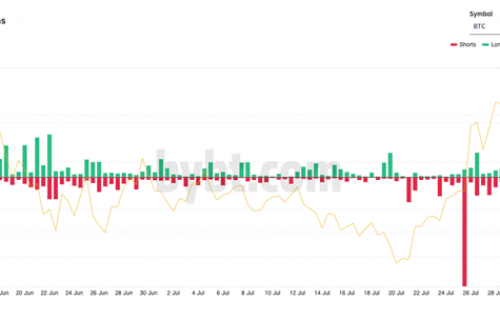VYSYN Ventures Weekly Insights #20
The march of innovation pushes forward. Horses and buggies were displaced by cars. Landlines with cords are being replaced by pocketable supercomputers called smartphones. Despite being an emerging technology, the blockchain industry will also be subject to innovation cycles. The current predominant platforms will undoubtedly face competition from emerging competitors.
Ethereum is the predominant smart contract platform. The lion’s share of decentralized computing takes place on Ethereum but several Ethereum competitors have emerged. Ethereum is in a precarious position where the development team behind the protocol also foresees it being displaced with Ethereum 2.0. However, other projects are also ramping up development and intensifying the competition to be the leading smart contract platform.
This VYSYN release is dedicated to analysing the leading competitor – Polkadot. After years of development, Polkadot recently launched and expectations are high for the technology. Polkadot is the largest smart contract platform by market cap after Ethereum. Ethereum currently has a significant lead with a market cap valuation which is over 10x Polkadot’s market cap. However, dominance is subject to the tide’s of change and the value proposition of Polkadot is certainly worthy of assessment.
Polkadot Raison D’etre
Polkadot was created as a way to shape the Web 3.0 experience. The protocol is the brainchild of its three founders –
- Dr Gavin Wood, co-founder of Ethereum and President of the Web3 Foundation
- Robert Habermeier, 2018 Thiel Fellow
- Peter Czaban, Technology Director of the Web3 Foundation
These individuals are long-time veterans in the blockchain and cryptocurrency industry with credentials that few can match. In particular, Gavin is responsible for creating several pillars of blockchain technology including the Solidity programming language, the Proof-of-Authority consensus mechanism, and the secure messaging protocol Whisper.
How does Polkadot Work?
Polkadot is a new blockchain protocol that aims to enhance and strengthen the Web 3.0. Web 3.0 is an anticipated upgrade to current internet protocols that puts more emphasis on decentralization and permissionless capabilities. Polkadot is a project capable of delivering on many of the initial promises of Ethereum. Specifically, Polkadot focuses on security, speed, data integrity, cross-chain functionality, and blockchain innovation. These terms may seem to be used in every new blockchain project but the Polkadot team has the pedigree to execute these promises.
Looking at the current ecosystem, we can identify several pain points. To date, it is complicated for blockchains to communicate with each other. Ethereum does not talk to Dash. Dash cannot communicate with Cosmos. Cosmos has no idea what Binance Smart Chain is doing. Furthermore, these chains have difficulty bringing in real-world data to their respective blockchains.
Polkadot overcomes these single-chain issues by connecting to multiple compatible blockchains called “Parachains.” These parachains can be native to the Polkadot protocol or parachains can make calls to third-party blockchains like Ethereum. The ability to run functions and processes in parallel can result in an exponential increase in bandwidth, throughput, and speed with minimal overhead. In addition to gains in performance, parachains provide networking and consensus layers with enough flexibility for unique features like formal verification or anonymity. All projects on the Polkadot network will see and talk to each other without suffering from traffic congestion or slowdown.
For projects not on Polkadot, there is still good news. Specific blockchains like Ethereum, or other smart contract projects, can connect to Polkadot with minimal effort and tinkering. Legacy projects like Bitcoin will require more engineering to allow communication. It is challenging but not impossible. The use cases for Polkadot seem limited only to the imagination and some salient projects have already sprouted up.
Polkastarter Designs Fundraising Infrastructure
One notable Polkadot project is Polkastarter, a decentralized exchange (DEX). Think “Kickstarter” + “Polkadot.” Polkastarter is focused on allowing startups to raise capital through community participation. Instead of depending on bank loans or VC funding, projects can raise capital through a token offering on Polkastarter. These transactions and token swaps will take place nearly instantaneously with extremely low fees.
The native Polkastarter token, POLS, may qualify as an “unknown gem”. With ~$10 million market cap, POLS trades primarily on Uniswap, the exchange de jour for gem hunters and yield farmers alike. If Polkastarter becomes the de facto way to raise capital for future Polkadot projects, a bull case can be easily made for a rise in value. Envision Ethereum having a similar platform to raise money for ICO’s back in 2017. That platform would have been a one-stop-shop for the ICO craze and would have captured huge value in the process. In reality, each ICO was forced to set up their own website and infrastructure.
Current Polkadot Versus Future Polkadot
As it stands, the fruits of Polkadot’s labours are currently being observed in proof of concepts. It took years to carefully develop Polkadot to a working MVP but progress is expected to happen more quickly hereon. Polkadot was recently accepted to Dapp.com and there are high expectations for projects like Polkastarter!
New computer protocols are seldom exciting and even less so when dealing with abstract concepts like blockchain technology. Even those familiar with the technology may not understand how useful it is until they use it and see how it is superior to the current standard.
Polkadot has been in development for several years and has pulled some of the spaces’ most remarkable minds into the project. Since its official launch this year, several projects have already been built on it, partnered with it, and imitated it. Ironically, the protocols’ goal is to work in the background but it is nonetheless receiving significant attention. At VYSYN, we will continue to explore how these new protocols will shape the landscape of DEXs, DeFi, and the cryptocurrency market.


